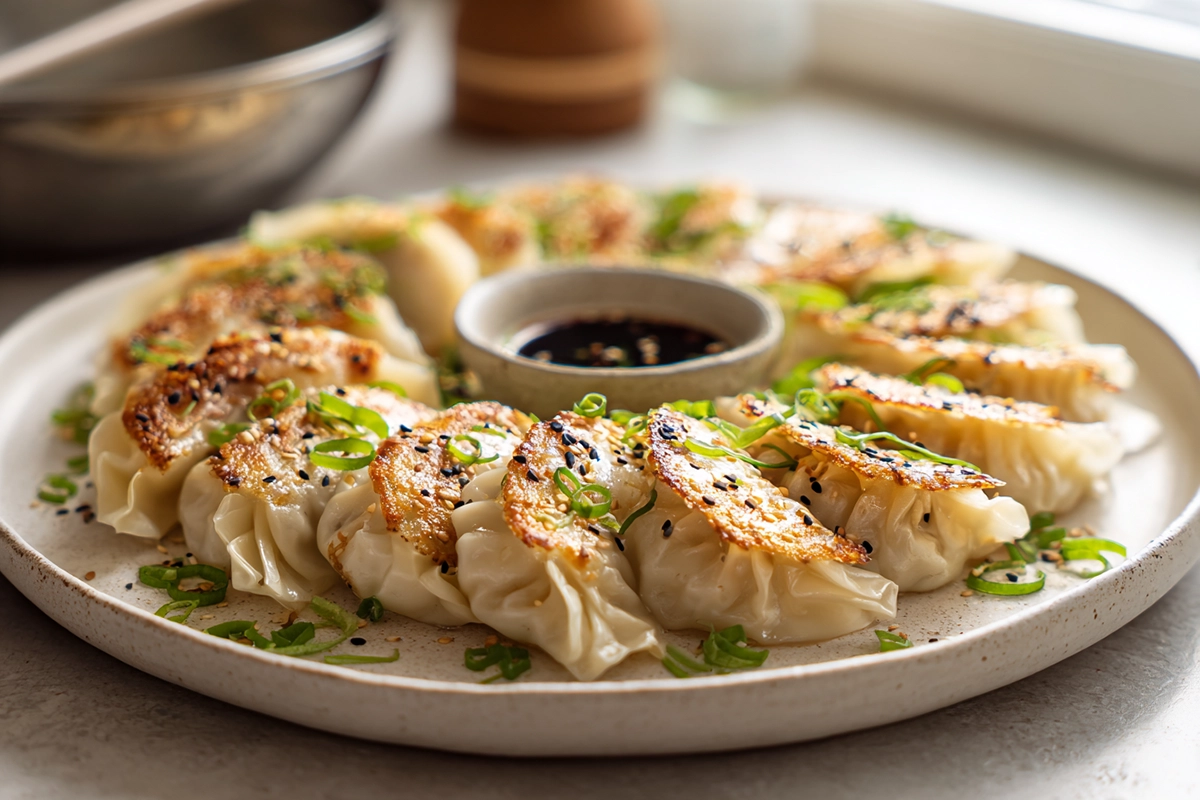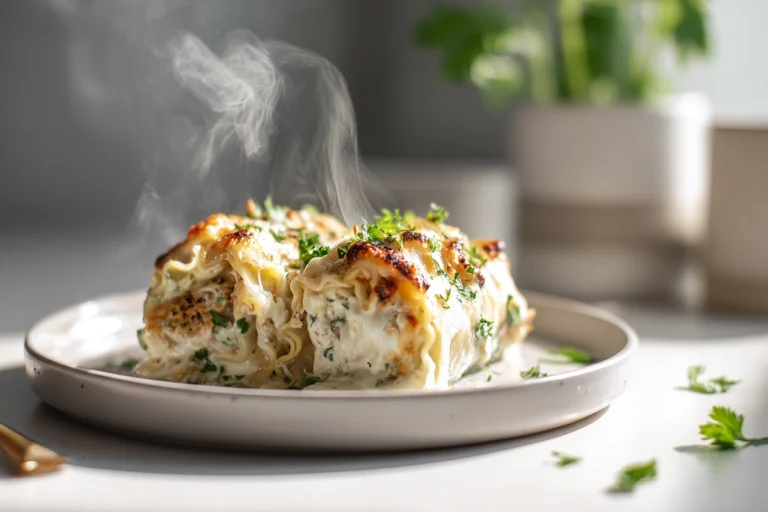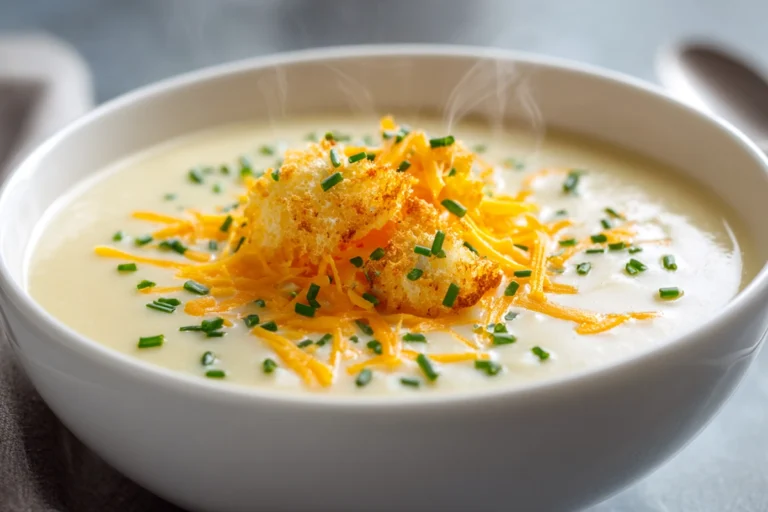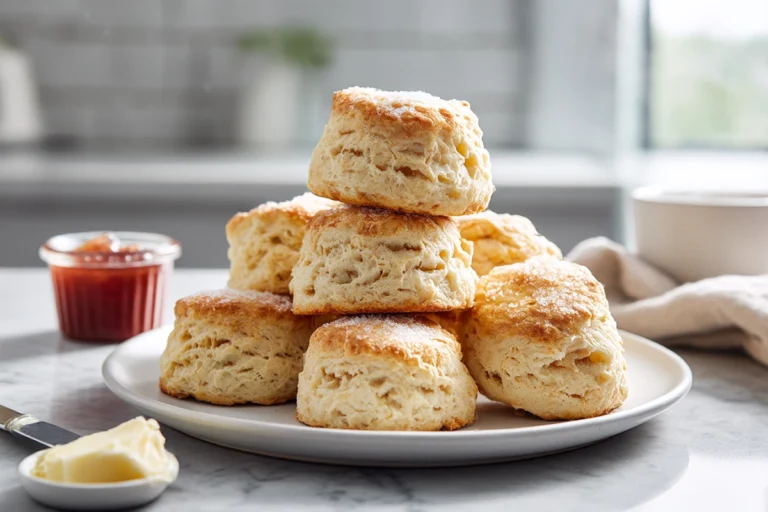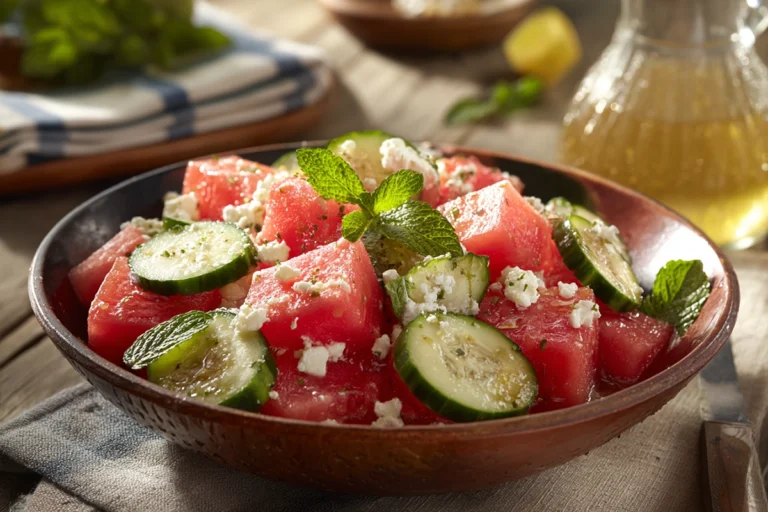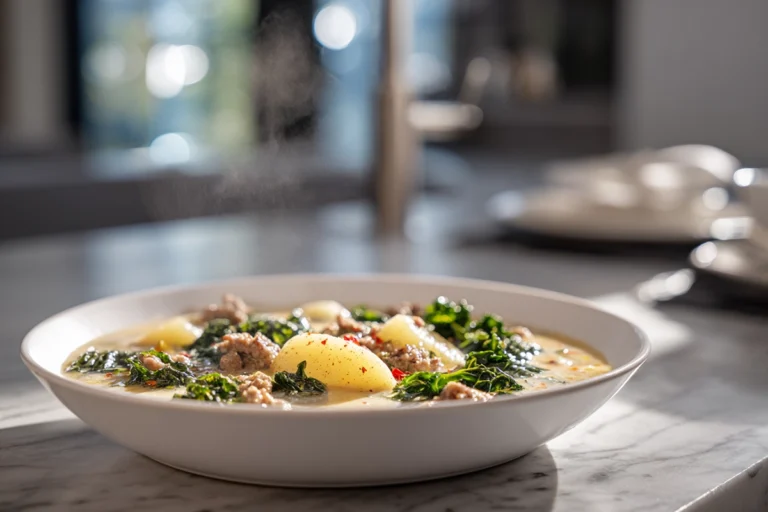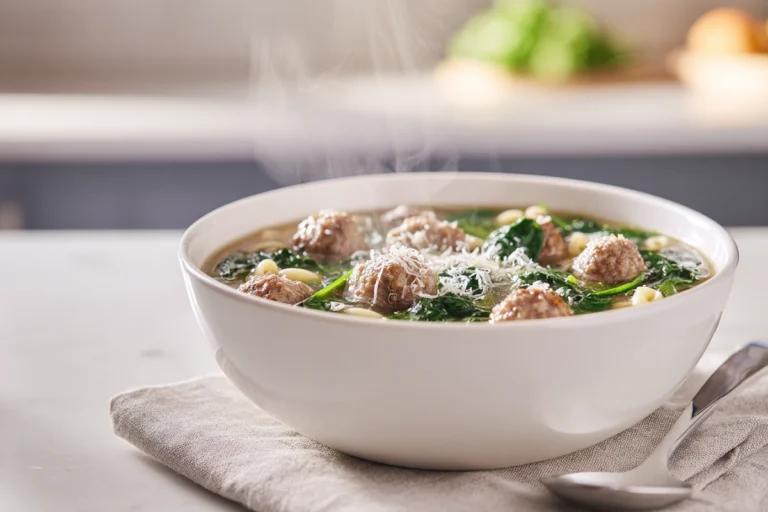Korean Dumplings (Mandu): A Comforting Bite of Korean Tradition You Can Make at Home
There’s something heartwarming about sitting at your kitchen counter, folding tiny pockets of dough filled with fragrant meat, vegetables, and sesame oil. Maybe it’s the rhythm of the work or the way the aroma fills the air when they hit the pan. If you’ve ever tasted Korean dumplings, known as mandu, you already know how comforting and satisfying they can be. Whether you steam, fry, or boil them in soup, these little bundles of joy bring a taste of Korean comfort food right to your table.
Growing up, you might have tried Chinese potstickers or Japanese gyoza, but mandu offers its own personality—slightly thicker wrappers, deeply seasoned fillings, and a satisfying chew. Once you learn the basics, you’ll realize how easy and versatile these dumplings can be for weeknight dinners or festive gatherings.
Ingredients & Pantry Staples
To make delicious Korean dumplings, you only need a few pantry staples and fresh ingredients. Once you get the proportions right, the rest is pure creativity.
Print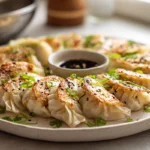
Korean Dumplings
- Total Time: 40 minutes
- Yield: 4 servings 1x
Description
These Korean Dumplings (Mandu) are savory, juicy pockets filled with seasoned meat, vegetables, and glass noodles, wrapped in soft dough and cooked to perfection. They can be steamed, fried, or boiled for a comforting taste of authentic Korean cuisine right at home.
Ingredients
1 lb ground pork (or chicken)
1 cup finely chopped napa cabbage
½ cup glass noodles (dangmyeon), cooked and chopped
¼ cup finely chopped green onions
½ cup minced mushrooms
2 cloves garlic, minced
1 tablespoon soy sauce
1 teaspoon sesame oil
½ teaspoon salt
¼ teaspoon black pepper
Dumpling wrappers (store-bought or homemade)
Optional garnish: chopped green onions, sesame seeds
Instructions
Salt the chopped napa cabbage and let it sit for 10 minutes to release moisture. Squeeze dry.
In a large bowl, combine ground pork, cabbage, noodles, mushrooms, green onions, garlic, soy sauce, sesame oil, salt, and pepper. Mix by hand until sticky.
Place a wrapper on your palm and spoon one tablespoon of filling in the center. Wet the edge with water and fold in half, pressing tightly to seal.
To steam: arrange dumplings in a steamer lined with parchment paper and steam for 10 minutes.
To pan-fry: heat 1 tablespoon of oil in a skillet; fry dumplings until golden brown, then add a splash of water and cover to steam for 3–4 minutes.
To boil or make soup: drop dumplings into boiling water or broth, cooking until they float (about 4–5 minutes).
Serve hot with a dipping sauce of soy sauce, rice vinegar, sesame oil, and red pepper flakes.
Notes
For vegan or vegetarian versions, replace meat with tofu and extra vegetables.
You can freeze uncooked dumplings on a tray and store them for up to 2 months.
Steamed dumplings are lighter, while fried versions add extra crunch and flavor.
Use low-sodium soy sauce to reduce salt intake without sacrificing flavor.
- Prep Time: 25 minutes
- Cook Time: 15 minutes
- Category: Appetizer / Main Course
- Method: Steamed, Pan-Fried, or Boiled
- Cuisine: Korean
Nutrition
- Serving Size: 6 dumplings (approx.)
- Calories: 250
- Sugar: 2 g
- Sodium: 480 mg
- Fat: 10 g
- Saturated Fat: 3 g
- Unsaturated Fat: 6 g
- Trans Fat: 0 g
- Carbohydrates: 26 g
- Fiber: 2 g
- Protein: 14 g
- Cholesterol: 55 mg
Dumpling Wrappers
You can use store-bought round dumpling wrappers from any Asian market or make your own if you prefer a thicker, chewier texture. If you go homemade, combine all-purpose flour, warm water, and a pinch of salt, then rest the dough before rolling it thin.
Filling Ingredients
Here’s a classic pork and vegetable mandu mix that strikes the right balance between savory and aromatic:
- 1 lb ground pork (or chicken)
- 1 cup finely chopped napa cabbage
- ½ cup glass noodles (dangmyeon), cooked and chopped
- ¼ cup finely chopped green onions
- ½ cup minced mushrooms
- 2 cloves garlic, minced
- 1 tablespoon soy sauce
- 1 teaspoon sesame oil
- ½ teaspoon salt
- ¼ teaspoon black pepper
Toss everything in a large bowl and mix by hand until it’s sticky and cohesive. You can adjust the texture by adding more noodles or cabbage if you want a lighter filling.
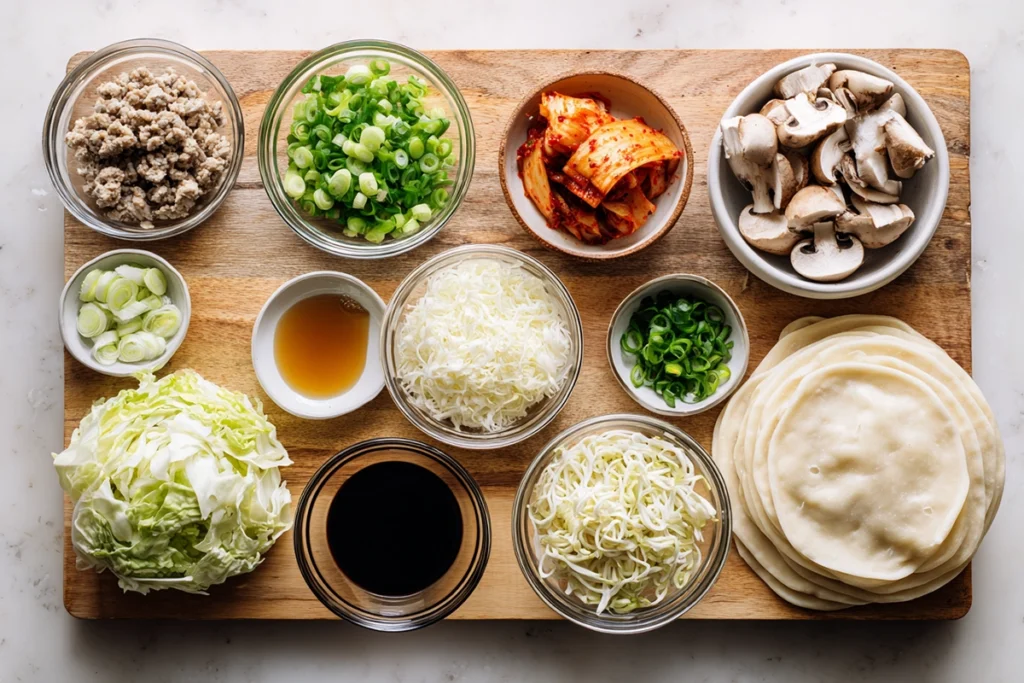
How to Prepare & Assemble
Making Korean dumplings is part craft, part therapy. Once you get the rhythm down, you’ll understand why it’s a family activity in many Korean homes.
Preparing the Vegetables
Start by salting the chopped napa cabbage to draw out moisture. After 10 minutes, squeeze it dry with your hands. This step keeps your filling from becoming watery. Cook the glass noodles until soft, then chop them into small pieces before adding to the mixture.
Wrapping the Dumplings
Lay a wrapper on your palm and spoon about one tablespoon of filling in the center. Dip your finger in water, moisten the edge of the wrapper, and fold it in half to seal. You can crimp the edge or leave it simple. The goal is a tight, well-sealed pocket that won’t burst while cooking.
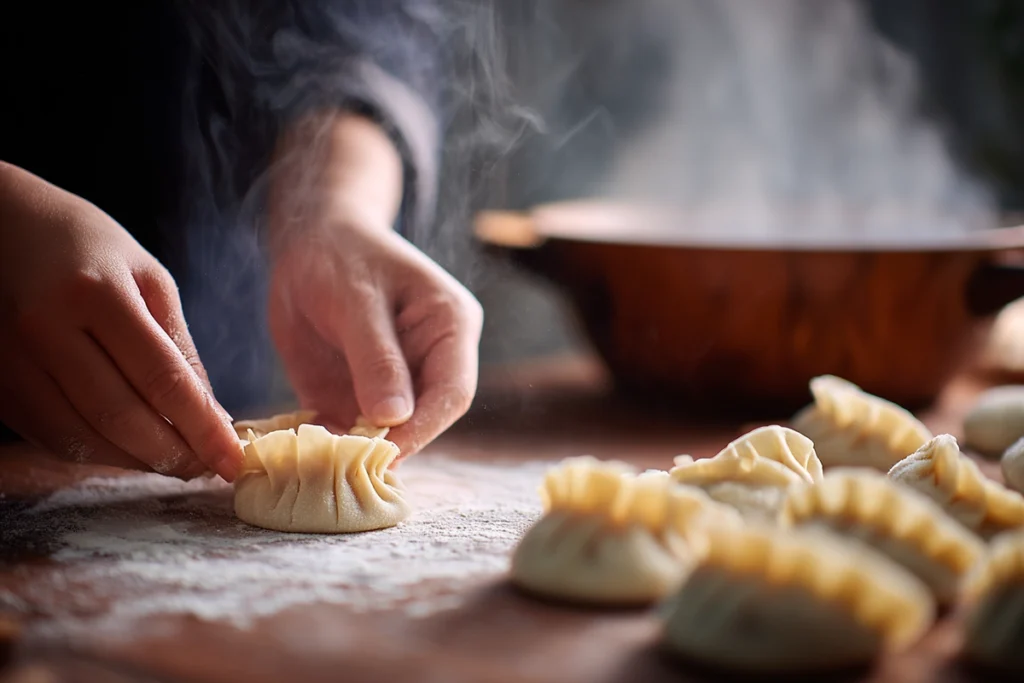
Cooking Options
There’s more than one right way to cook mandu, and each brings out a different texture and flavor.
Steamed (Jjin-Mandu) – Arrange dumplings in a steamer lined with parchment. Steam for 10 minutes or until the wrapper turns slightly translucent.
Pan-Fried (Gun-Mandu) – Heat a tablespoon of oil in a skillet. Fry dumplings until golden brown on the bottom, then add a splash of water and cover to steam for another 3–4 minutes.
Boiled or in Soup (Mul-Mandu / Mandu-Guk) – Drop dumplings gently into boiling water or broth. Cook until they float to the surface and turn glossy, about 4–5 minutes.
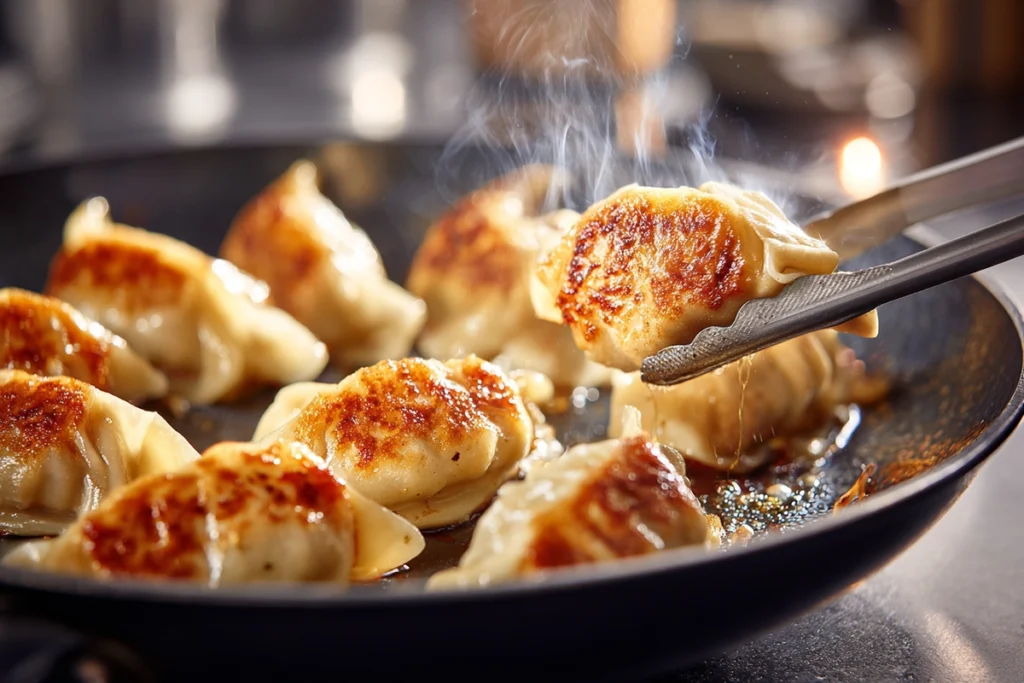
Flavor Variations & Filling Ideas
You can easily make Korean dumplings your own. Think of the filling as a canvas for different ingredients and regional twists.
Kimchi Mandu
For a spicy kick, add ½ cup chopped kimchi and a teaspoon of gochugaru (Korean chili flakes) to your filling. The tangy flavor pairs beautifully with pork or tofu.
Vegetable Mandu
Skip the meat and double up on tofu, cabbage, mushrooms, and carrots. Drizzle with sesame oil and soy sauce for extra umami.
Beef or Chicken Mandu
Use ground beef for a heartier dumpling or ground chicken for a lighter version. Both work perfectly with the same vegetable mix.
You can even experiment with “wang mandu,” the large, bun-like version that’s steamed until fluffy, or mandu jeongol, a comforting hot pot filled with dumplings, noodles, and vegetables.
Dietary Variations & Substitutions
Not every dumpling has to follow the same formula. With a few adjustments, you can enjoy Korean dumplings no matter your diet.
Vegan or Vegetarian
Replace the meat with mashed tofu and finely chopped shiitake mushrooms. Add extra cabbage, glass noodles, and a touch of soy sauce to boost the flavor. Most store-bought wrappers are vegan, but double-check the label to be sure.
Gluten-Free
Use gluten-free wrappers made from rice flour or tapioca flour. Swap the soy sauce for tamari or coconut aminos, which offer a similar salty depth without gluten.
Low-Calorie
Use lean chicken breast or turkey and reduce the oil. Steaming instead of frying also keeps calories low while maintaining that comforting flavor.
Halal
Substitute ground beef or chicken for pork and ensure your soy sauce is halal-certified. You’ll still get the same rich, savory experience without compromising your dietary principles.
Storage, Freezing & Reheating Tips
If you’re making a big batch of Korean dumplings, freezing is your best friend. Arrange the uncooked dumplings on a tray so they don’t touch, then freeze until solid. Transfer them to a resealable bag, and they’ll keep for up to two months.
When you’re ready to cook, there’s no need to thaw—just steam or fry them straight from frozen. For leftovers, a quick steam or light pan-fry will bring them back to life. Avoid microwaving, as it can make the wrappers rubbery.
For the best results, always cool cooked dumplings before refrigerating, and store them in an airtight container to maintain freshness.
Nutrition & Health Insights
You might be surprised how balanced Korean dumplings can be. A serving of five to six dumplings contains roughly 230–260 calories, depending on the cooking method. Steamed dumplings are naturally lighter, while fried versions add crispiness and a bit more indulgence.
They’re also a great source of protein and fiber, especially if you add vegetables like cabbage and mushrooms. To cut sodium, use low-sodium soy sauce and increase herbs or aromatics for depth of flavor.
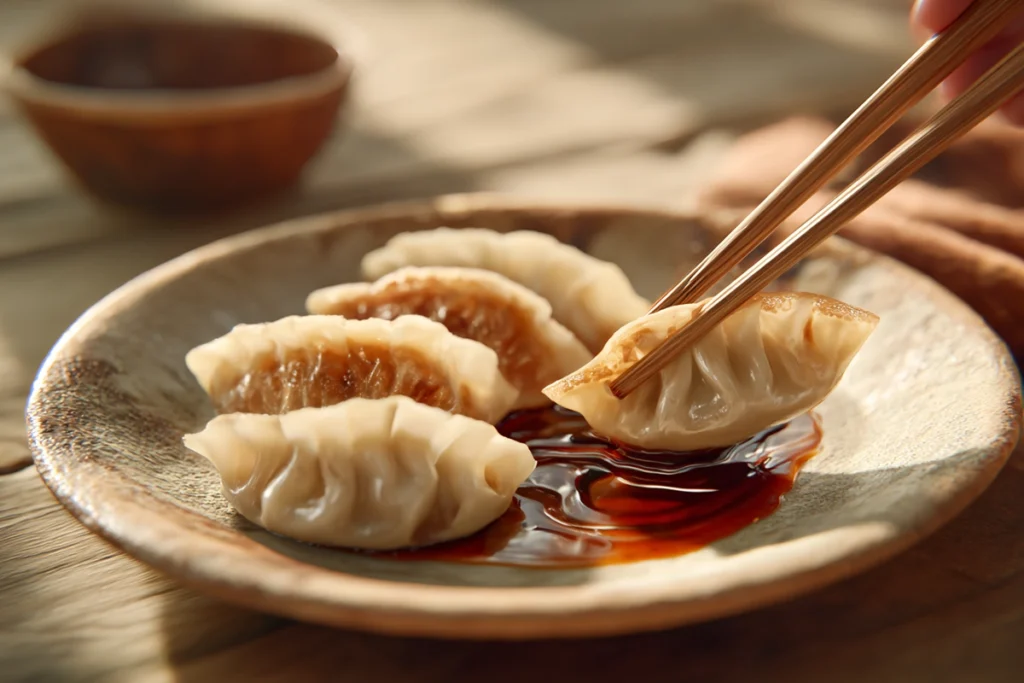
There’s something deeply satisfying about folding, cooking, and biting into homemade Korean dumplings. Each step—from seasoning the filling to hearing that soft sizzle in the pan—connects you to a tradition that’s both humble and delicious. Once you try making mandu yourself, you’ll understand why these dumplings are more than a recipe—they’re a warm, flavorful expression of comfort and culture that you’ll keep coming back to.
FAQ
What’s the difference between Korean dumplings and gyoza?
Korean dumplings (mandu) tend to have thicker wrappers and a juicier filling than Japanese gyoza. They’re also seasoned differently, often using sesame oil, soy sauce, and glass noodles for texture.
Can I use store-bought wrappers for Korean dumplings?
Absolutely. Store-bought dumpling wrappers work perfectly for mandu. Just keep them covered with a damp towel while working so they don’t dry out.
Can I cook frozen Korean dumplings without thawing?
Yes, you can cook them straight from frozen. Just increase the cooking time slightly, whether you’re steaming, frying, or boiling.
What’s the best dipping sauce for mandu?
A classic mix of soy sauce, rice vinegar, sesame oil, and a sprinkle of red pepper flakes makes the perfect dipping sauce. You can also add a dash of gochugaru for spice.
How long do Korean dumplings last in the freezer?
Frozen Korean dumplings last up to two months when properly sealed in an airtight container or freezer-safe bag.
What Are Our Readers Saying?
There are no reviews yet. Be the first one to write one.

